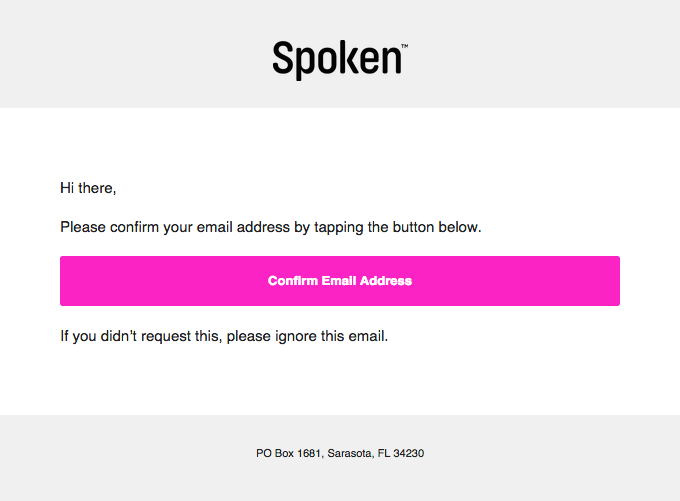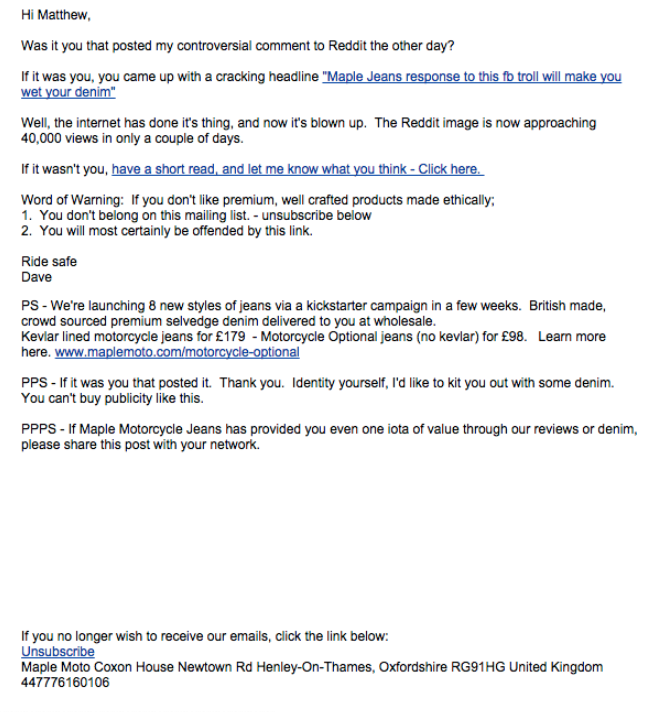How do you keep subscribers opening, reading, clicking, and converting long after your welcome email series comes to an end? Driving email engagement is one of the toughest jobs in digital marketing. And it’s no wonder why…
The average person receives over 100 emails per day just for work. Multiply that a few times and you’ve got the rest of their crowded inbox. Email engagement is a broad topic. There are many different metrics to track and goals to consider. But it’s worth improving because engaged subscribers mean more traffic to your website, increased revenue, more eyeballs on your content, and a better sender reputation to support email deliverability.
That’s why we’ve put together a guide to driving email engagement. In this post, we’ll cover what email engagement is, the best ways to measure it, and a few tips to go from skimming and deleting to clicking and converting.
What is email engagement?
Email engagement is a term that refers to how subscribers interact with your emails. Engaged subscribers do something in response to your email, such as open, read, click, or reply. Highly engaged subscribers do this regularly – it’s likely they may even overlap with your best customers. (Thank goodness for superfans!)
This is the opposite of an unengaged contact, who generally ignores or deletes your emails until unsubscribing.
What are the most important email engagement metrics?
Email engagement differs wildly by industry and by brand, so it’s important to create your own benchmarks with your email list. The most important email engagement metrics to track are:
- Open rates and repeat open rates
- Read, skim, delete rates
- Link click rates
- Click-through rates
- Click-to-open rate (CTOR)
- Conversion rates
- Email bounce rates
Each piece of data tells you specific information about campaign performance as well as what your list is going to find engaging. Monitoring email engagement helps you fine-tune your email marketing strategy to reach exactly who you want, how you want, and when you want. We’ll expand on each of these metrics and give you some tips on how to improve each metric in the sections below.
Email open rates and repeat open rates
One of the first metrics email marketers look at is the number of people who opened an email. Your analytics tool may tally this in total opens or unique opens—the difference being that unique opens don’t include repeated opens by the same contact. A common industry benchmark is that average email opens hover between 20% and 30%. But the best thing to do is look at where your email open rates stand now and work to improve them.
Of course, tracking open rates isn’t as simple as it used to be. Apple’s 2021 Mail Privacy Protection (MPP) allows Apple Mail users to hide information about when, where, and how they open emails. However, this just means you have to look beyond open rates to determine email marketing strategies. We’ll discuss a few more below.
Click-through rates and click-to-open rates
Once someone has opened your email, the next step is to actually follow your call-to-action.
Clicks are some of the most important metrics you can track for your emails – because that’s where you find out if your subscribers are really interested in your email or not. There are two main ways to track clicks: click rate and click-through rate (CTR), and the click-to-open rate (CTOR).
Sometimes these terms get a little mixed up, but here’s the simplest way to remember the difference:
- The click rate or click-through rate measures clicks based on how many emails were delivered.
- The click-to-open rate measures clicks based on how many emails were opened.
So, the CTR would exclude any emails that bounced or got blocked, but it would include emails that landed in spam. The CTOR only measures the percent of clicks from emails subscribers opened.
Another way to think about it is that the CTR measures overall campaign performance while the CTOR measures how engaging the content of the campaign is. Both metrics are valuable to track, but the CTOR metric is becoming more popular as it really dials in on how well you’re engaging with your subscribers.
Read, skim, delete rates
Beyond the classic open and clicks, you may be able to access metrics in your email analytics that provide a deeper dive into how people engage with your campaigns.
Read, skim, and glance/delete rates help you understand if your subscribers are actually reading your copy…or just passing through. Read, skim, and delete rates vary by tool, but generally, they measure how much time your subscribers spend looking at your email once they’ve opened it.

Depending on the email analytics tool you use, the “threshold” for read, skim, and glance will be set to different timeframes. In the Email on Acid analytics, you can adjust these thresholds yourself. If you don’t adjust them, our defaults are set at:
- Glance/delete: 2 seconds or less
- Skim: 7 seconds or less
- Read: 8 seconds or more
These engagement rates will vary depending on the goals of your email, the type of content you send, and your audience. For example, if you’re sending a detailed email newsletter designed to be read like an article, you’ll want to pay attention to this metric. However, if you’re sending a quick update meant for subscribers to click through as fast as possible, it’s less important.
Our advice: Once you set these thresholds, keep them consistent with each email you send. This will allow you to accurately compare engagement across your different email campaigns.
Conversion rates
Do you hear that heavenly chorus? Your conversion rate is the goal for your campaign, the reason you sent your email in the first place. Conversion rate is the percentage of email recipients who clicked on a link within your email and completed a desired action, such as downloading an asset or purchasing a product.
As a marketing team, you need to decide what a “conversion” for a particular campaign actually is. What’s the purpose of sending the email?
- Completing a specific purchase?
- Signing up for a trial or demo?
- Filling out a form on a landing page?
- Downloading branded content?
- Registering for an event?
- Making a donation?
Certain “desired actions” could be considered micro-conversions. These are small, but important steps that an individual may take on the journey to the primary reason for sending them a message. For example, a macro-conversion would be making a final purchase decision, but a micro-conversion could be signing up for an email newsletter or scheduling an appointment to learn more about a product or service.
Engagement and email deliverability
As email marketers, it can be very tempting to focus solely on the size of your email list. Most marketers assume that a bigger email list means a better one, but that’s not necessarily the case.
While it’s totally awesome to have a large email list, it’s actually better to have a more engaged one. That’s because mailbox providers monitor email engagement as a way of evaluating sender reputation.
Sender reputation
Sender reputation is a score that mailbox providers like Gmail, Outlook, and Yahoo Mail give to your brand. These service providers evaluate how many emails you send, spam complaints, unsubscribe rate, as well as many other email engagement metrics to determine your score. The higher the score, the more likely you’ll land in the inbox and avoid the spam folder.
Sending high-quality emails that your subscribers actually want to receive is the only way to maintain your sender reputation. Engagement indicates to mailbox providers that people really want to receive your emails. The more engaged your list, the less likely you’ll get caught in the spam folder in the future.
Email engagement and your list
So, how can you build a more engaged email list? It starts with list hygiene. At least a couple of times per year (but maybe more often), you should go through your entire email list and make sure your addresses are up-to-date.
You should also consider proactively removing or segmenting subscribers who are unengaged with your emails. This kind of list hygiene removes the “dead weight” from your list. And while your total subscriber count may dwindle a bit, your email engagement rates will improve significantly. That’s simply because the people who don’t engage are no longer dragging down your metrics.
Here are some important list hygiene best practices:
Monitor your bounce rates
The bounce rate is the ratio of your total number of emails sent that couldn’t be successfully delivered to the recipient’s inbox. There are two kinds of bounces to watch for: Soft bounces and hard bounces.
- Soft bounces refer to temporary issues for your subscriber with receiving emails, such as a full inbox or a technical issue. You may want to pause emailing subscribers with soft bounces for a certain period of time to avoid any issues.
- Hard bounces, on the other hand, mean your email is permanently undeliverable. Hard bounces should be removed from your email list for future emails. Email service providers (ESPs) may flag your emails as spam if too many of your emails suffer from hard bounces and will negatively impact your sender reputation.
Use double vs. single opt-in
When subscribers go to sign up for your list, they have two options: single opt-in or double opt-in.
- Single opt-in means they’re added to your email list as soon as they click “submit.” Subscribers receive a confirmation directly on the opt-in form. This is the most common method of subscribing.
- Double opt-in adds another step in the process. Potential new subscribers receive an email requiring them to click through to confirm their subscription to your list.
These are usually simple, transactional emails sent during the signup process. Here’s a great example of what a double opt-in looks like:

Double opt-in takes more time, but doing so means your subscribers are much more likely to engage with future emails. (If you want the benefits of a double opt-in with the subscriber experience of a single opt-in, you’re in luck: Our friends at Mailgun have just the thing.)
Sunset policies
How do you know when it’s time to proactively remove unengaged subscribers from your email list? A sunset policy is one of the most effective ways to identify the contacts who just aren’t that into you.
With a sunset policy, you set thresholds to identify subscribers who’ve lost interest and stopped engaging with your emails. For example, you may want to sunset subscribers who haven’t opened an email from you in more than two months.
Then, you can either attempt to re-engage those contacts, send to them less frequently, or simply remove them from your list. Often, senders will create a separate segment for subscribers who are less likely to engage. That means you don’t have to say so long to those people, you just don’t show up in their inbox quite as regularly.
Segment your email list
Another way to keep your email list clean using your engagement metrics is through list segmentation. While you can segment your list in all kinds of ways (customers vs. prospects, by product line, by persona, and more), doing so by engagement can help build credibility with your subscribers. Sending more targeted, relevant emails to smaller groups can be one way to boost your engagement.
It’s never too late to send an email like this one from Bespoke Post. While they typically send this email at the beginning of their welcome flow, you can retroactively ask your subscribers what they want to receive and when, or point them to an overall preferences center. From there, you can create different segments by behavior.

When you know what your subscribers are interested in, you can use that in your email segmentation strategy to deliver messages that are more valuable and relevant. And that means people will be more likely to engage.
Keep in mind that some people just don’t want to hear from you as frequently – asking them their preferences upfront and switching up email cadence can be a great way to keep them as a subscriber without sacrificing engagement.
How re-engagement campaigns work
As painful as it can be to go through your hard-won leads, it’s important to eliminate any email addresses with low engagement scores that haven’t yet unsubscribed. But before you say goodbye for good, consider sending a re-engagement campaign.
Re-engagement emails give your subscribers who haven’t opened or clicked on an email for a certain period of time (say, 90 days or more) one more chance to engage with one of your emails. Sometimes called “reactivation” or “we miss you” emails, these simple, straightforward emails help weed out any low-engagement subscribers to be removed from your list.
This email from Auto Trader is a great example. It gives subscribers a chance to update their preferences or opt-out, since it’s been a while.

You may have to get on your knees and ask: Will you continue to be my subscriber? All too often, the answer is “no.” This may be explicit depending on your email copy or just another ignored email. And that’s okay—it’s always worth a shot.
For campaigns like these, you’ll want to be as transparent and honest as possible. This simple email from Duolingo is a great example of this kind of campaign. It’s short and to the point, inviting the subscriber to jump back into their language course.

Sometimes, as with the example above, reactivating subscribers is about more than just email clicks. This campaign re-engages users, encouraging them to log in again and use the application.
5 quick tips to increase email engagement
Behind-the-scenes work with list hygiene and deliverability is only the beginning when it comes to increasing your engagement. The best way to increase your email engagement is to send great emails your subscribers love. Here are a few ways to do that:
1. Start with your subject line and preheader text
Opens are the first step toward engaging with your email. You can’t get a click without an open, after all. Your subject line is what can make or break that attempt. In fact, 47% of email users report that the email subject line determines whether or not they choose to open your email.
You want your subject lines to be:
Succinct: Most mailbox providers cut off your subject line around 50 characters (Gmail goes up to 70). While that doesn’t mean you have to make your subject line fit within those parameters, it should at least get the point across.
Honest: Never, ever fake out your subscribers to get an open. It’s a lazy move (and one that will likely end in unsubscribing or a spam complaint.) Your subject line is like the headline of a news article—it should reflect the contents inside. No bait and switch. Like the villages in “The Boy Who Cried Wolf”, your subscribers will stop listening.
Free of sensationalism: By the fifteenth time your subscribers have received an email subject line that says, “LAST CHANCE!!!” You might as well be screaming, “PLEASE PLEASE PLEASE OPEN MY EMAIL!!!” There’s nothing wrong with a few choice all-caps or exclamation points. Just don’t be a subject line drama queen.
Interesting: That said, there’s nothing wrong with puns, emojis, or other playful turns of phrase if that fits your brand. An interesting subject helps you stand out in a crowded inbox. Use it to generate curiosity and tease what’s inside without giving it all away.
Subject lines are great candidates for A/B testing to see what resonates the most with your subscribers. The effectiveness of punctuation, emoji use, length, and overall tone will vary based on the type of email and your subscriber base, so it’s worth experimenting.
2. Take your time with quality copy and images
Every email you send should have a clear purpose, with copy and images in your email content that reflect that purpose.
Apple is known for its attention to detail in its copy and images. This email is no exception—a great example of paying attention to both brand and subscriber interests:

That doesn’t mean you have to have beautifully designed emails; if your subscribers respond to minimal, plain-text-esque emails, then go for it. Or if they respond well to a certain email template, keep using it.
This tongue-in-cheek email uses a plain text style that feels like a friend—very on-brand for Maple Jeans:

Everyone always wants a shortcut when it comes to email engagement, but the truth is, the more time and effort you spend on your emails so that they match your brand, meet your subscriber needs, and have a little extra “wow” factor, the more engagement you will receive.
3. Personalize multiple elements
Email personalization goes way beyond “first name” these days. The goal of personalization is to make the email feel personal. You have all kinds of subscriber data at your disposal—why not make the most of it?
While it’s not possible to deeply personalize every single campaign you send, think about the ways to add a personal touch where you can, such as:
- Make targeted recommendations based on previous behavior
- Use segmentation to create separate messages for subscriber groups based on pain point or previous engagement
- Trigger automated emails after they meet certain milestones
- Mix up send times based on previous subscriber behavior or geographic location
- Showcase their purchase or product data in an interesting way

Spotify’s “Wrapped” campaign is one of the best-known examples of personalization gone viral on social media. Spotify listeners know that the app collects all kinds of data about their preferences—packaging up this data for the year in an email built for social sharing helps the campaign go viral every December.
That’s because personalization is what your subscribers want. Studies show that personalized subject lines are 22% more likely to be opened, making this one of the most successful email marketing techniques.
4. Experiment with extra special content types
This is where the “wow” factor comes in with your email content. While it may take extra effort to develop, choosing a few emails each quarter that get special treatment with dynamic content, animation, or interactive content can go the extra mile.
This email from Bose is a great example of simple-but-effective interactive content by using a scratch-off effect in an email to reveal a discount code.

Try adding other special, potentially unexpected elements to your emails to boost engagement. For example, dynamic countdown timers help create a sense of urgency around events, contests, and promotions. The more creative, the better!
This playful announcement from Lyft, for example, uses an animation to encourage subscribers to scroll down and learn more.
5. Go big on your call-to-action
Finally, make your call-to-action (CTA) obvious and enticing to your subscribers. Your CTA is where you find out if all of your marketing efforts really matter to your subscribers or not.
That usually means choosing just one main CTA for your email and limiting the rest of your links to one or two. You don’t have to limit yourself to a big CTA at the bottom of your email, either – try A/B placing your CTA just above the fold, or the same CTA in more than one place.
Writing creative copy for email CTAs is another idea to try. Rather than the normal Shop now, Learn more, Start today, button copy – what if you tried something your subscribers have never seen on a CTA before.
Mailjet by Sinch used a little creative wizardry when promoting an ebook in an email that had a Harry Potter theme:

“Accio” is a magical word that pretty much anyone who’s seen a Harry Potter movie or read one of the books will be somewhat familiar with. But it also helped cast a spell on subscribers, convincing them to engage with that CTA button.
Bonus: A/B test everything
What makes increasing engagement so tricky? Defining what makes an email engaging is up to your subscribers. You may think you’ve come up with the best email ever, but your metrics might say otherwise. That’s why it’s so important to A/B test your emails any time you make a change or have a new idea.
Split testing design, copy, and other email elements helps you continuously improve email engagement over time. As you discover what your list responds to, implement changes then sit back and watch email campaign performance improve.
Don’t risk losing out on email engagement
There’s another kind of testing and email optimization that supports the best possible email engagement. Pre-send email testing is part of the quality assurance (QA) process that ensures as many subscribers as possible can engage with what you deliver.
We built Email on Acid by Sinch to help you tackle some of the biggest complexities in email marketing:
- Preview how emails render on more than 100 clients and devices so you can see how campaigns display in different mailboxes before you hit send.
- Check out inbox display so you can see how your subject line and preheader will appear.
- Check email accessibility factors to be sure every subscriber can view and engage with your campaigns.
- Validate links in your emails to avoid broken links that send subscribers to 404 pages (validate your UTMs for tracking too).
- Be sure you’re not on a major blocklist before you launch an important campaign with our deliverability checks.
All these steps and more are combined in an automated workflow we call Campaign Precheck, which you can customize to your team’s needs. Plus, you can use our email analytics to gain a better understanding of how your subscribers are engaging with what you send. Get started with Email on Acid by Sinch today.


Author: The Email on Acid Team
The Email on Acid content team is made up of digital marketers, content creators, and straight-up email geeks.
Connect with us on LinkedIn, follow us on Facebook, and tweet at @EmailonAcid on Twitter for more sweet stuff and great convos on email marketing.
Author: The Email on Acid Team
The Email on Acid content team is made up of digital marketers, content creators, and straight-up email geeks.
Connect with us on LinkedIn, follow us on Facebook, and tweet at @EmailonAcid on Twitter for more sweet stuff and great convos on email marketing.






